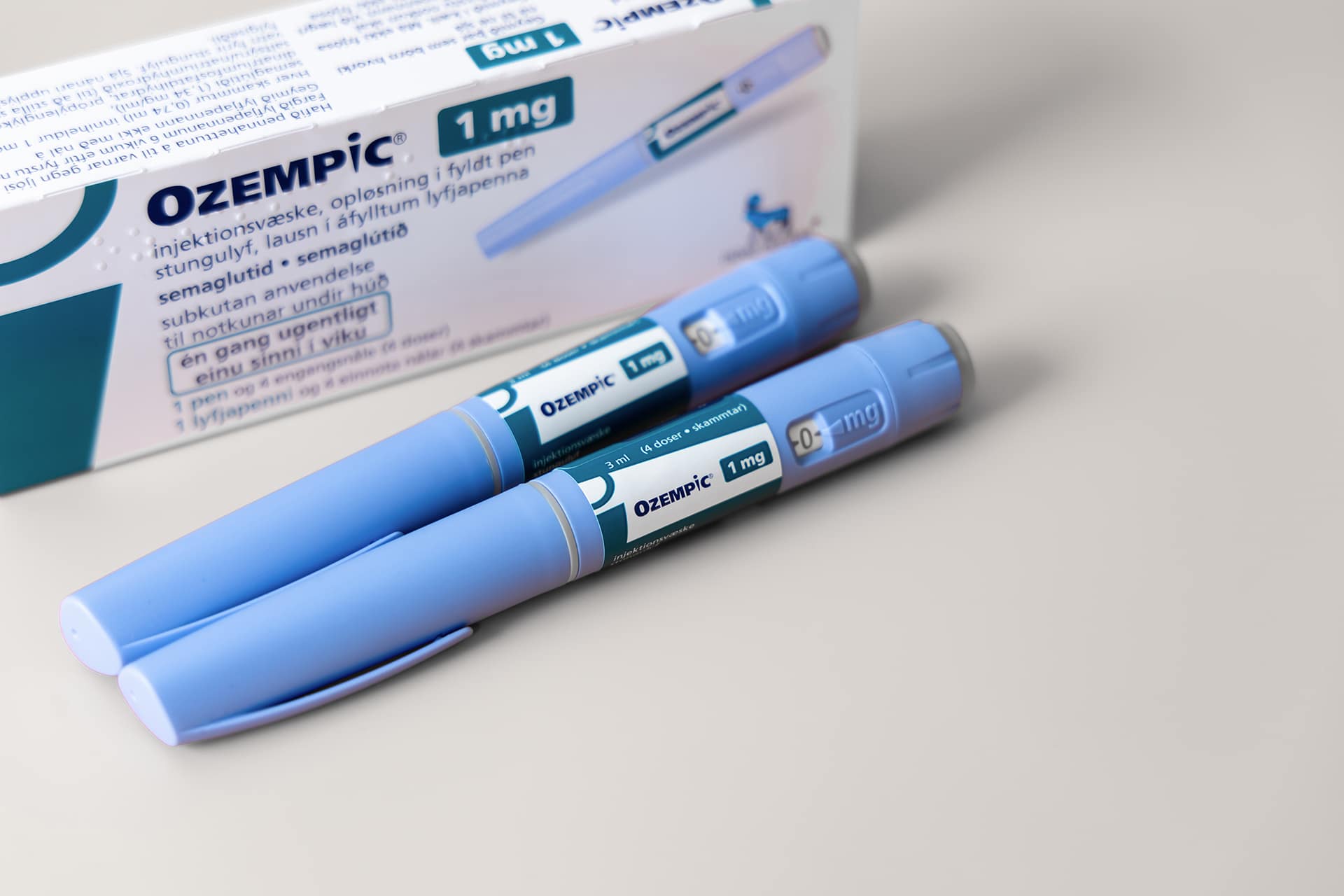Ozempic, Weight Loss & Plastic Surgery
Weight loss is an admirable goal for many people, whether it is to improve health or appearance. Many people are using prescription medications such as Ozempic to help them in the fight to shed pounds. Is Ozempic safe? How much weight can you lose with Ozempic? Does it work? It is time to find out the answers to these questions!
Weight loss is one of the most common goals set for both health and personal reasons. Losing weight can have numerous benefits, including improved overall well-being and reduced risk of certain diseases such as diabetes and heart disease. Drugs such as Ozempic are quickly becoming a way that many people are winning the fight to lose weight and improve their health. As a result, more people are enjoying a healthy weight and all the benefits that come with it.
However, there are problems associated with weight loss as well, particularly when it occurs rapidly. One of the common concerns that individuals have when it comes to weight loss is the effect it can have on their skin. Many people have found that using a drug such as Ozempic to induce weight loss can, over time, lead to serious skin laxity that can be unsightly and even pose health problems. It is important not only to understand how to lose weight, but what to do with excess skin after weight loss. It is also important to understand how weight gain can occur after using Ozempic, and what to do if this happens.
Ozempic and Weight Loss
Ozempic is a medication that belongs to a class of drugs called GLP-1 receptor agonists. It is primarily used to treat type 2 diabetes but has also been found to be effective in promoting weight loss. Ozempic works by targeting the GLP-1 receptors in the brain, which helps regulate appetite and reduce food cravings. By controlling hunger, the medication can assist individuals in achieving their weight loss goals.
Along with Ozempic, other drugs are often prescribed for weight loss support. These drugs, including liraglutides, such as Saxenda; tirzepatides, such as Mounjaro, or dulaglutides, such as Trulicity; and Meformin, work in a similar way to Ozempic in helping to control appetite.
Effectively, those using Ozempic or another drug are trading off on side effects. In many cases, these drugs are designed to treat other issues such as diabetes, but also have the added benefit of controlling appetite. Many people have seen significant, rapid weight loss results while using these drugs, including losing up to 15 percent of their body weight in as little as a year.
This leads to a series of questions about Ozempic as a tool in managing weight. Many myths are arising about Ozempic and other weight-loss drugs, so it is important to learn the truth about how these drugs work and manage realistic expectations about the outcomes you can expect when using them.
- How much weight can I lose when using Ozempic? It is hard to predict exactly how much weight any individual will lose on Ozempic or other weight loss drugs, as results vary from zero to over 100 pounds, depending on starting weight. However, for most people, it is safe to say that a 20 pound weight loss is relatively easy to obtain within six months on Ozempic. Larger amounts of weight loss will take longer.
- How fast will Ozempic work to help me lose weight? While results vary among individuals, one study found that people using Ozempic lost an average of 15 pounds over a three-month period and 27 pounds over a six-month period. This translates to an average of 5 pounds a month, or a little over a pound a week. This rate of weight loss is what most doctors and experts recommend when trying to lose weight. Of course, some individuals lost weight faster, and some slower. One of the factors determining the speed of weight loss was how heavy the person was to begin with. The more weight a person had to lose, the more rapid initial weight loss tended to be.
- Will I regain the weight after using Ozempic? The answer to this question lies in the nature of the Ozempic drug and others of its class. These drugs are meant to be effective over the long term in controlling A1C, a measure of blood sugar. Because of this, they are meant to be used for a long time. If someone stops taking Ozempic, the initial benefits of the drug–controlling blood sugar, appetite and cravings–may also disappear. At that point, the individual may revert to old eating habits and gain back the weight that was lost. Reports indicate that those taking Ozempic have experienced an average of two-thirds regain of weight after stopping the drug. For someone who lost 30 pounds, this would mean a regain of 20 pounds.
What Problems Can I Expect From Taking Ozempic?
If you choose to use Ozempic, there are several problems that can arise that may need to be addressed through plastic surgery.
Skin Laxity
When individuals lose a significant amount of weight, whether through lifestyle changes, medication, or surgery, the skin can sometimes have difficulty adapting to the new body shape. This can result in skin laxity or loose skin. Skin laxity after weight loss is a common concern, especially for those who have lost a substantial amount of weight quickly. It encompasses all areas of the body, and may lead to sagging skin, wrinkles, jowls, and creepy skin.
The severity of skin laxity can vary from person to person and depends on several factors, including age, genetics, the speed of weight loss, and overall skin health. Individuals who have lost a large percentage of their body weight are more likely to experience skin laxity compared to those who have lost a smaller amount of weight.
Cosmetic surgeries for lax skin, also known as skin tightening procedures, have become increasingly popular in recent years. These surgical interventions aim to restore tightness and firmness to the skin, enhancing a person’s appearance and boosting their self-confidence.
Return of Fat Deposits
Stubborn fat deposits, particularly in the belly, thigh and underarm area may quickly return once an individual begins to regain weight. This can be very frustrating for someone who has been trying hard to lose weight and attack these problem areas. Fat deposits tend to show up in predictable areas according to the individual’s body type and overall shape.
Weight Gain
Surprisingly, a small percentage of individuals have reported gaining weight, rather than losing it, while taking Ozempic. While this phenomenon is not clearly understood, studies suggest that it could be due to the effects of insulin resistance in which the body stops using insulin effectively and stores excess fat as a result. Weight gain may also be due to uncontrolled dietary habits that are not addressed by Ozempic.
What Can I Do To Change My Appearance After Taking Ozempic?
Those who take Ozempic may experience a variety of issues that can be successfully addressed by a plastic surgeon. Most of these have to do with lax skin after weight loss; however, some procedures can also help if weight loss is unsuccessful or if weight is regained after taking the drug.
- Facelift (Rhytidectomy): A facelift addresses sagging in the face and neck area. It involves removing excess skin, tightening facial muscles, and repositioning tissues for a more youthful appearance. Patients may wish to address this issue after taking Ozempic, particularly if facial skin laxity is pronounced.
- Arm Lift (Brachioplasty): An arm lift targets loose skin on the upper arms. This procedure involves removing excess skin and fat, creating a more toned and defined arm contour. Many people losing significant amounts of weight struggle with underarm skin looseness.
- Abdominoplasty (Tummy Tuck): A tummy tuck focuses on lax skin and muscle separation in the abdominal area. It involves removing excess skin, tightening muscles, and repositioning the belly button for a flatter and firmer abdomen. This is one of the most popular procedures after weight loss, as it helps the patient gain a smoother, tighter abdominal area.
- Thigh Lift (Thighplasty): A thigh lift targets loose skin on the inner and outer thighs. This surgery involves removing excess skin and fat, leading to more toned and contoured thighs. Some patients suffer from skin laxity more in the hip and thigh area than in other parts of the body.
- Liposuction. If weight is regained after Ozempic, liposuction may help. This procedure removes excess fat deposits and helps patients manage problem areas that may not be affected by diet and exercise.
After taking Ozempic and losing weight, patients may want to consult with a plastic surgeon to discuss possible procedures. Most professionals advise a wait of about six months after taking these drugs in order to allow time for the drug to work and for the scope of the issue to become apparent.
At the Aesthetic Center, we work with you to design the right treatment for your individual needs. If you have recently worked hard to lose weight, and are interested in learning more about treatments to address weight loss issues, call us today to set up a consultation with one of our professionals.







